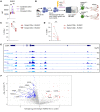Induced CD8α identifies human NK cells with enhanced proliferative fitness and modulates NK cell activation
- PMID: 38805302
- PMCID: PMC11291271
- DOI: 10.1172/JCI173602
Induced CD8α identifies human NK cells with enhanced proliferative fitness and modulates NK cell activation
Abstract
The surface receptor CD8α is present on 20%-80% of human (but not mouse) NK cells, yet its function on NK cells remains poorly understood. CD8α expression on donor NK cells was associated with a lack of therapeutic responses in patients with leukemia in prior studies, thus, we hypothesized that CD8α may affect critical NK cell functions. Here, we discovered that CD8α- NK cells had improved control of leukemia in xenograft models compared with CD8α+ NK cells, likely due to an enhanced capacity for proliferation. Unexpectedly, we found that CD8α expression was induced on approximately 30% of previously CD8α- NK cells following IL-15 stimulation. These induced CD8α+ (iCD8α+) NK cells had the greatest proliferation, responses to IL-15 signaling, and metabolic activity compared with those that sustained existing CD8α expression (sustained CD8α+) or those that remained CD8α- (persistent CD8α-). These iCD8α+ cells originated from an IL-15Rβhi NK cell population, with CD8α expression dependent on the transcription factor RUNX3. Moreover, CD8A CRISPR/Cas9 deletion resulted in enhanced responses through the activating receptor NKp30, possibly by modulating KIR inhibitory function. Thus, CD8α status identified human NK cell capacity for IL-15-induced proliferation and metabolism in a time-dependent fashion, and its presence had a suppressive effect on NK cell-activating receptors.
Keywords: Cancer; Immunology; Innate immunity; NK cells.
Conflict of interest statement
Figures









Comment in
- Striking a balance: the Goldilocks effect of CD8α expression on NK cells
References
MeSH terms
Substances
Grants and funding
LinkOut - more resources
Full Text Sources
Molecular Biology Databases
Research Materials

